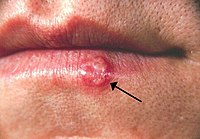
DNA lesions correlate with lymphocyte function after selective internal radiotherapy
Sign Up to like & getrecommendations! Published in 2019 at "Cancer Immunology, Immunotherapy"
DOI: 10.1007/s00262-019-02323-x
Abstract: In patients with non-resectable hepatic malignancies selective internal radiotherapy (SIRT) with yttrium-90 is an effective therapy. However, previous data indicate that SIRT leads to impaired immune function. The aim of the current study was to… read more here.
Keywords: internal radiotherapy; dna; sirt; dna lesions ... See more keywords

Discrimination between Different DNA Lesions by Monitoring Single-Molecule Polymerase Stalling Kinetics during Nanopore Sequencing.
Sign Up to like & getrecommendations! Published in 2022 at "Nano letters"
DOI: 10.1021/acs.nanolett.2c01833
Abstract: O6-Carboxymethylguanosine (O6-CMG), O6-methylguanosine (O6-MeG), and abasic site (AP site) are DNA lesions induced by alkylating agents. Identification of these lesions in DNA may aid in understanding their relevance to carcinogenesis and may be used for… read more here.
Keywords: stalling kinetics; dna; dna lesions; different dna ... See more keywords

RPA shields inherited DNA lesions for post-mitotic DNA synthesis
Sign Up to like & getrecommendations! Published in 2021 at "Nature Communications"
DOI: 10.1038/s41467-021-23806-5
Abstract: The paradigm that checkpoints halt cell cycle progression for genome repair has been challenged by the recent discovery of heritable DNA lesions escaping checkpoint control. How such inherited lesions affect genome function and integrity is… read more here.
Keywords: mitotic dna; dna synthesis; dna; dna lesions ... See more keywords

Processing DNA lesions during mitosis to prevent genomic instability
Sign Up to like & getrecommendations! Published in 2022 at "Biochemical Society Transactions"
DOI: 10.1042/bst20220049
Abstract: Failure of cells to process toxic double-strand breaks (DSBs) constitutes a major intrinsic source of genome instability, a hallmark of cancer. In contrast with interphase of the cell cycle, canonical repair pathways in response to… read more here.
Keywords: processing dna; dna; lesions mitosis; dna lesions ... See more keywords

Daughters sense their mother's stress
Sign Up to like & getrecommendations! Published in 2018 at "Cell Cycle"
DOI: 10.1080/15384101.2017.1408235
Abstract: The human genome is constantly challenged by genotoxic stress arising from endogenous and exogenous sources, which interferes with proper DNA replication. To counteract such replication stress and protect genome integrity, cells employ a complex DNA… read more here.
Keywords: dna; cell cycle; dna lesions; stress ... See more keywords

Tracking of progressing human DNA polymerase δ holoenzymes reveals distributions of DNA lesion bypass activities
Sign Up to like & getrecommendations! Published in 2022 at "Nucleic Acids Research"
DOI: 10.1093/nar/gkac745
Abstract: Abstract During DNA replication, DNA lesions in lagging strand templates are initially encountered by DNA polymerase δ (pol δ) holoenzymes comprised of pol δ and the PCNA processivity sliding clamp. These encounters are thought to… read more here.
Keywords: dna; dna polymerase; dna lesions; lesion ... See more keywords

Replication studies of carboxymethylated DNA lesions in human cells
Sign Up to like & getrecommendations! Published in 2017 at "Nucleic Acids Research"
DOI: 10.1093/nar/gkx442
Abstract: Abstract Metabolic activation of some N-nitroso compounds (NOCs), an important class of DNA damaging agents, can induce the carboxymethylation of nucleobases in DNA. Very little was previously known about how the carboxymethylated DNA lesions perturb… read more here.
Keywords: dna replication; dna lesions; carboxymethylated dna; replication ... See more keywords

Two white collar proteins protect fungal cells from solar UV damage by their interactions with two photolyases in Metarhizium robertsii.
Sign Up to like & getrecommendations! Published in 2021 at "Environmental microbiology"
DOI: 10.1111/1462-2920.15398
Abstract: The photolyases PHR1 and PHR2 enable photorepair of fungal DNA lesions in the forms of UV-induced cyclobutane pyrimidine dimer (CPD) and (6-4)-pyrimidine-pyrimidone (6-4PP) photoproducts but their regulation remains mechanistically elusive. Here, we report that the… read more here.
Keywords: white collar; phr1 phr2; dna lesions; wc1 wc2 ... See more keywords

Bulky Adducts in Clustered DNA Lesions: Causes of Resistance to the NER System
Sign Up to like & getrecommendations! Published in 2023 at "Acta Naturae"
DOI: 10.32607/actanaturae.11741
Abstract: The nucleotide excision repair (NER) system removes a wide range of bulky DNA lesions that cause significant distortions of the regular double helix structure. These lesions, mainly bulky covalent DNA adducts, are induced by ultraviolet… read more here.
Keywords: dna; dna lesions; ner system; bulky adducts ... See more keywords

Photorepair of Either CPD or 6-4PP DNA Lesions in Basal Keratinocytes Attenuates Ultraviolet-Induced Skin Effects in Nucleotide Excision Repair Deficient Mice
Sign Up to like & getrecommendations! Published in 2022 at "Frontiers in Immunology"
DOI: 10.3389/fimmu.2022.800606
Abstract: Ultraviolet (UV) radiation is one of the most genotoxic, universal agents present in the environment. UVB (280-315 nm) radiation directly damages DNA, producing cyclobutane pyrimidine dimers (CPDs) and pyrimidine 6-4 pyrimidone photoproducts (6-4PPs). These photolesions… read more here.
Keywords: dna lesions; photorepair; nucleotide excision; basal keratinocytes ... See more keywords

UV Protection in the Cornea: Failure and Rescue
Sign Up to like & getrecommendations! Published in 2022 at "Biology"
DOI: 10.3390/biology11020278
Abstract: Simple Summary The sun is a deadly laser, and its damaging rays harm exposed tissues such as our skin and eyes. The skin’s protection and repair mechanisms are well understood and utilized in therapeutic approaches… read more here.
Keywords: protection; dna lesions; cornea failure; cornea ... See more keywords